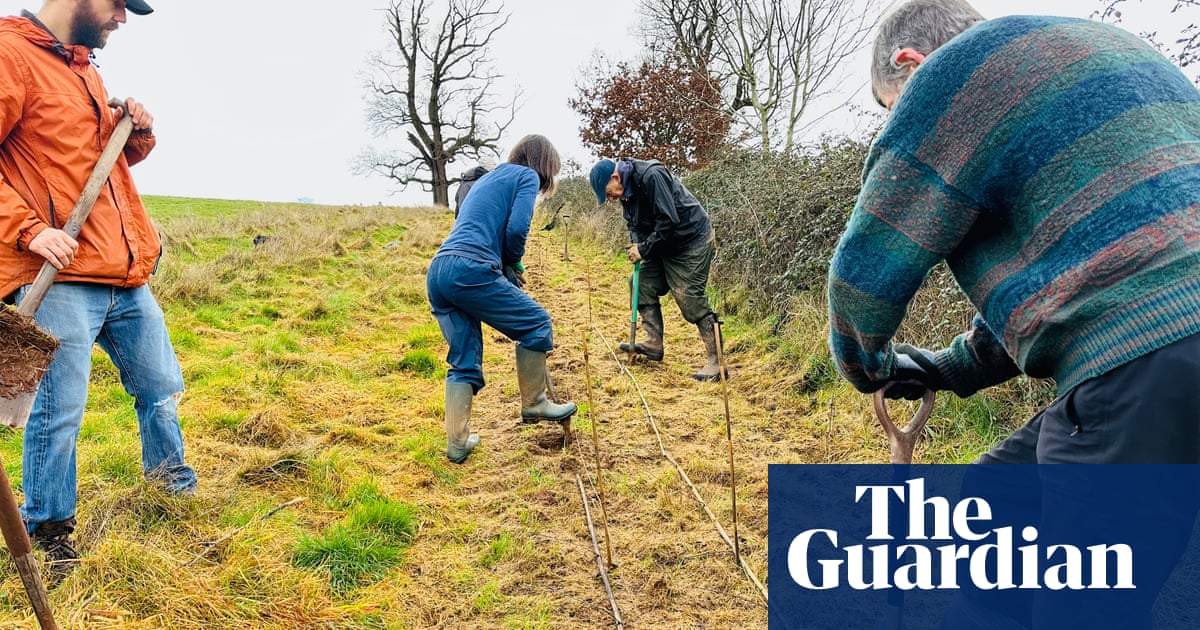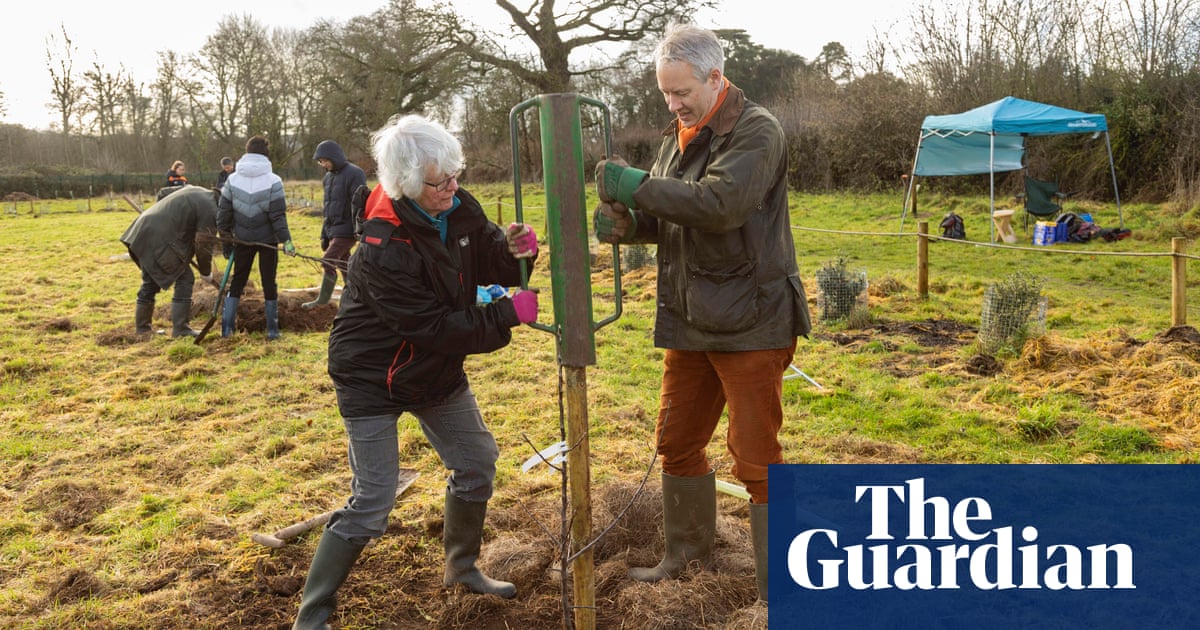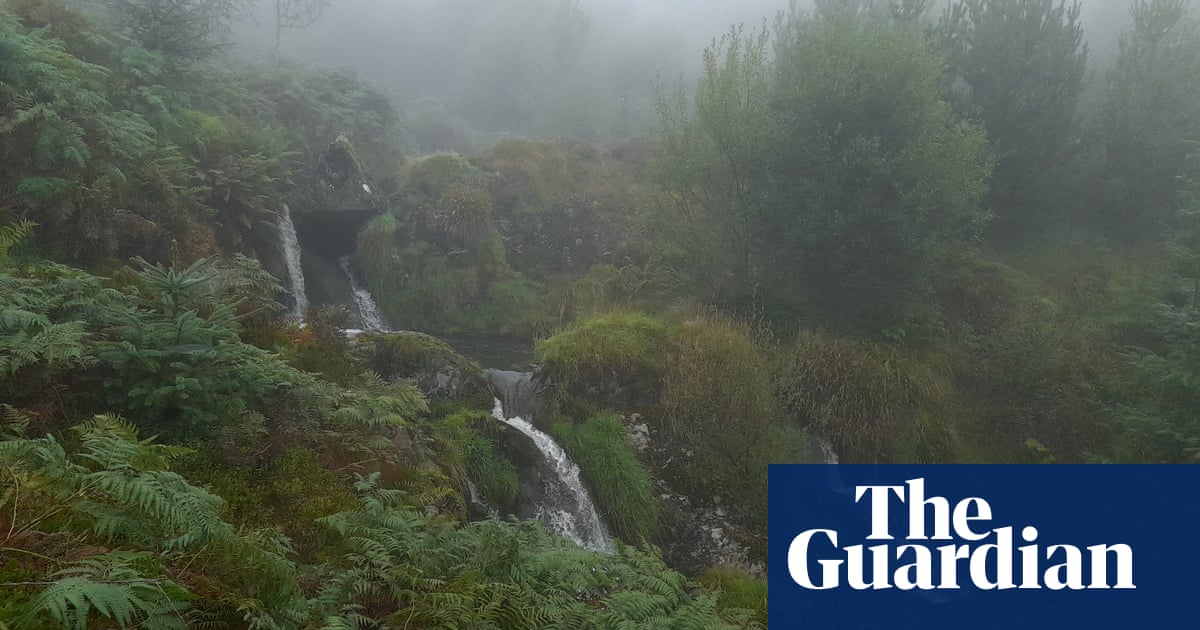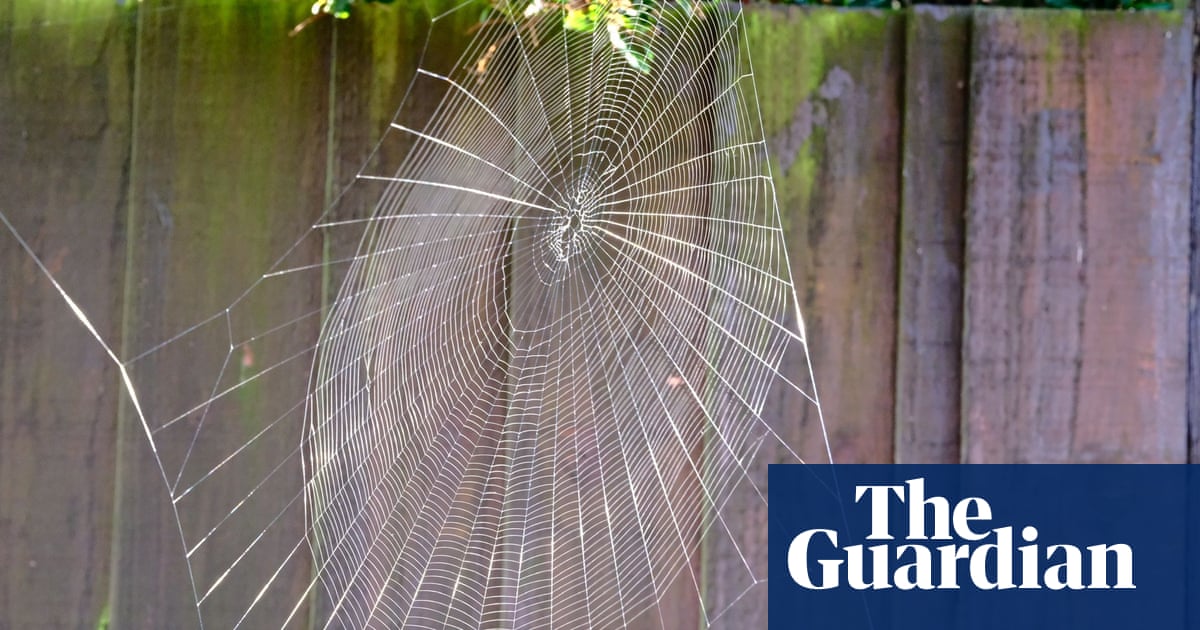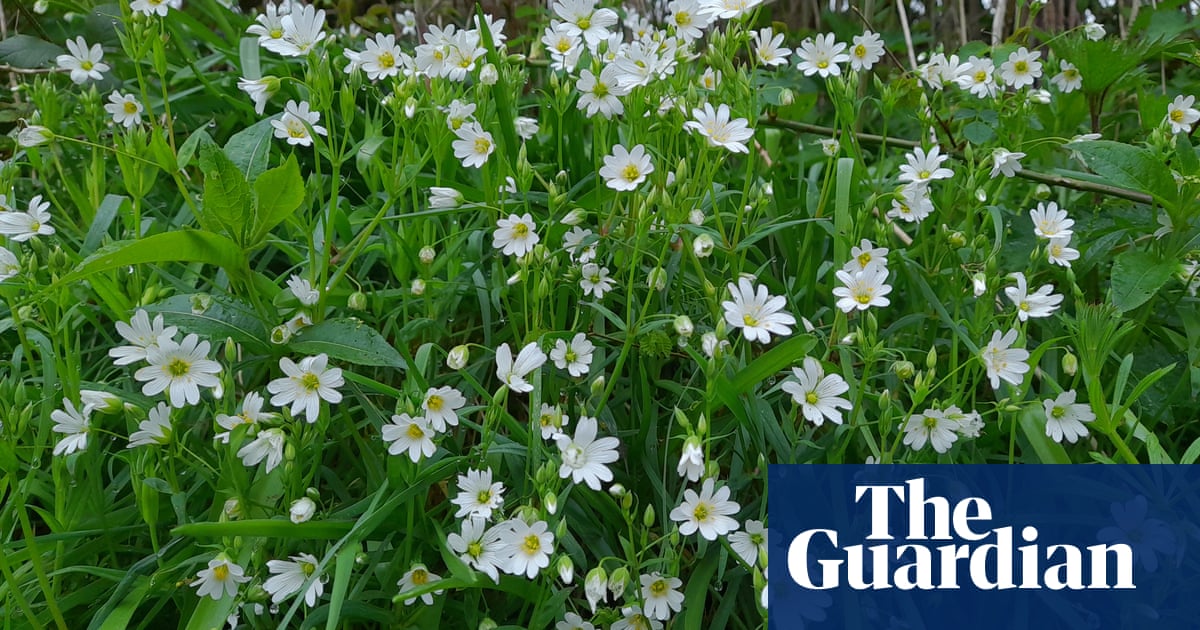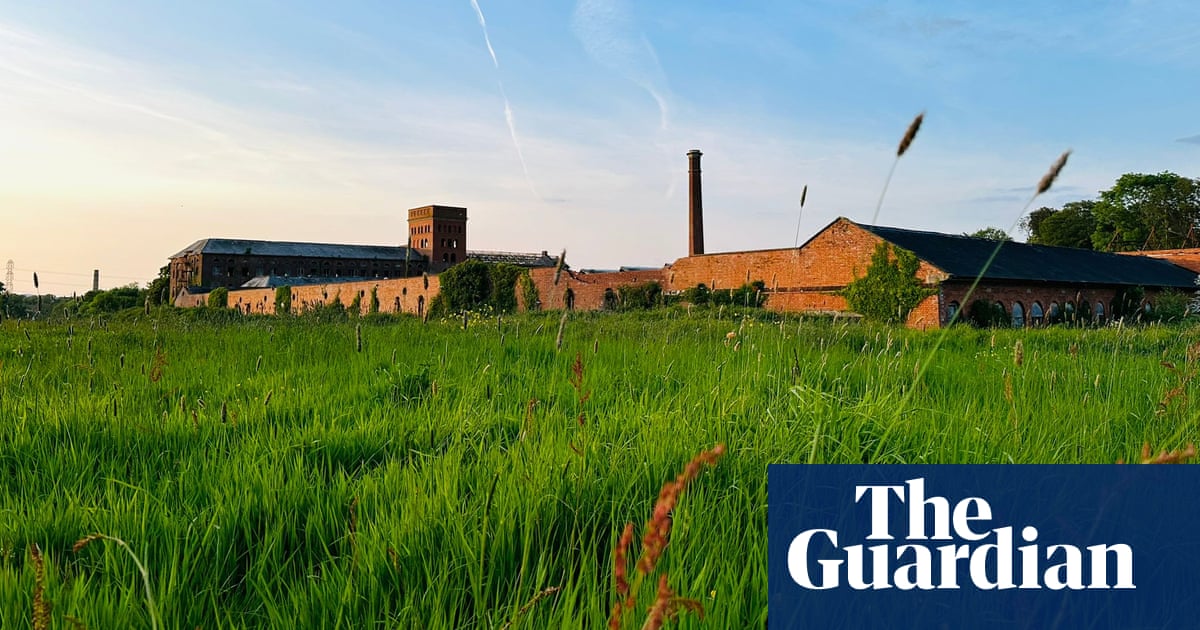
It’s another beautiful day. This sentence doesn’t usually elicit a collective groan of despair, but after three arid weeks, the gardeners of south-west England are entitled to sigh a bit. In my local Fox’s Field, volunteers from Wellington’s Transition Town group are hauling water from the stream up the slope to carefully rehydrate the herbs in their newly planted forest garden.
The ground is covered with a layer of woodchip, hay and municipal soil improver. It has been so toasted by the sun that you can crumble it in your fingers like granola. At intervals, tufts of green poke up through the mulch: oregano and lemon balm, bergamot and sweet cicely, chamomile and clary sage. Over the past month, 273 plants have been planted, with 198 still to go, representing hundreds of volunteer hours, and costing about £1,800 in grant money. There’s a lot at stake.
The last rain fell in biblical proportions. On 9 May, the air turned beige, lightning crackled, and thunder rolled from Blackdowns to Quantocks and back again like a timpani section gone mad. The rain, when it finally fell, hammered the freshly ploughed fields, blasting away the topsoil like a pressure washer. Roads turned into rivers, carrying away whatever nutrients farmers had applied, and rivers boiled with frothy Nescafé-coloured water. Half the average month’s rain fell in the space of 24 hours.
It’s not so much the quantity as the quality of the rain that’s the issue: a “wet” month isn’t much use if it all falls at once. Quite the opposite, in fact. And after the flood, the run of bone-dry days and chilly nights have made the usually soggy south-west feel like the high sierras. No wonder the plants are struggling.
In the forest garden, the team has spent the past 18 months suppressing the grass with cardboard, hay and woodchip, and in one section a huge sheet of black plastic. Not only does this “no dig” method help retain the soil structure, and avoid releasing carbon into the atmosphere as conventional ploughing does, it also provides the soil with a protective layer. It is less likely to dry out, is more stable and absorbent, and therefore richer in nutrients and microbial activity.
But if the current conditions prevail, without the intervention of these water-bearing humans, even these lucky plants will eventually die. We walk back to the river in evening’s golden light, our empty watering cans swinging.





